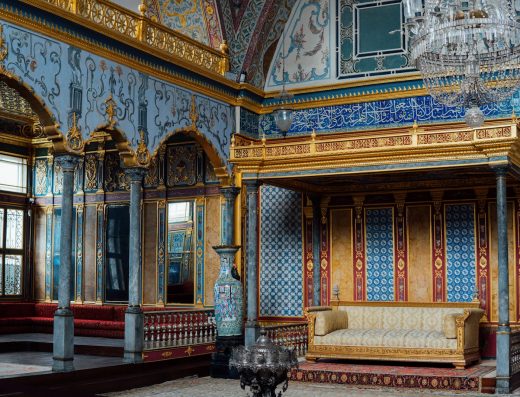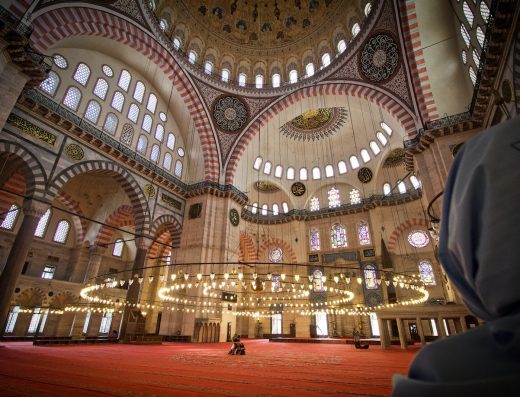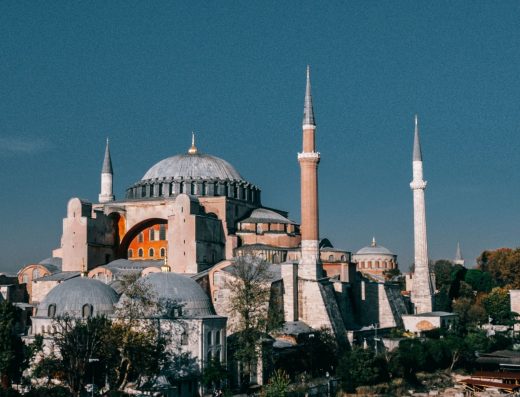Yerebatan Sarnıcı is the largest of more than a hundred Byzantine period cisterns that lie beneath the city of Istanbul (Constantinople)
Istanbul has been one of the most frequently besieged cities in the world, and therefore has needed a permanent supply of freshwater through the ages. Some open-air reservoirs (open cisterns) and many underground cisterns were built in Istanbul Open everyday during the Byzantine period. Aqueducts carried water to these reservoirs from great distances.
The largest and most ornate of these cisterns is Yerebatan Sarayı (Palace). Columns and capitals of earlier pagan temples were used in its construction, providing a very decorative appearance; thus it is often called “saray” which means “palace” in Turkish. Buildings with naves and interior colonnades were basilicas, so, Yerebatan, with its many rows of columns, was also called Basilica Cistern.
Yerebatan was dug and built sometime after 542 by Emperor Justinian I for the Byzantine Palace and its grounds. In total, there are 336 columns, arranged 12 by 28, most of which are topped with Corinthian or Doric capitals. Each column is about 9 m / 30 ft high. The cistern is 65 m / 213 ft. wide and 138 m / 453 ft. long. The walls are almost 5 m / 16 ft. thick and made from baked clay bricks, covered inside with waterproof plaster.
By looking at the water level marks as high as the capitals on the plaster walls, one can see that the cistern was completely filled with water at times in the past. It is believed that the full capacity was approximately 100 thousand tons.
Between 1985-1988, the Municipality of Istanbul completely restored the cistern and built a wooden walkway between the columns. A total of 52 steps take visitors down to the walkway. A permanent café, a small stage for minor performances, and special lighting and sound effects for visitors were also added.
Today, some of the water in the cistern may be collected rainwater. The water level never goes down, it is continuously fed by some unknown sources. Once in a while the water needs to be pumped out.
The carp in the water are decorative and an incidental protection against pollution. Some believe the Byzantines may have raised fish in the cistern also.
The many vaults built into cisterns made it possible to have terraces in hilly areas. Squares and parks were built on these terraces. Originally, there was a public commercial square on top of the Yerebatan, which was replaced by some Byzantine and Ottoman houses. It is said that people dug holes from their houses into the cloister vaults of the cistern to get water from the reservoir.
In the 18th century, walls were added to eight columns in the northeastern side of the cistern in order to strengthen them. During the reign of Abdülhamid II (1876-1909), some 37 columns in the southwestern part were walled off and this area was filled in for some unknown reason.
• About Cisterns
Some of the cisterns in Istanbul were not part of the original plan. As the need for water grew, space beneath parts of some buildings were converted into cisterns. Such was the case of the cisterns of the Chora Church and the Church of St. Savior Pantepoptes (Eski Imaret). The Sphendone of the Roman Hippodrome was also used as a cistern in the middle ages. Turks have always preferred running water, so when the Byzantine Period had passed and the city was no longer under siege, Turks did not use the cisterns as they were intended. Most of them were converted into small bazaars or storehouses. The cistern of the Church of the Pantocrator (Zeyrek) was used as a storage place for lemons





